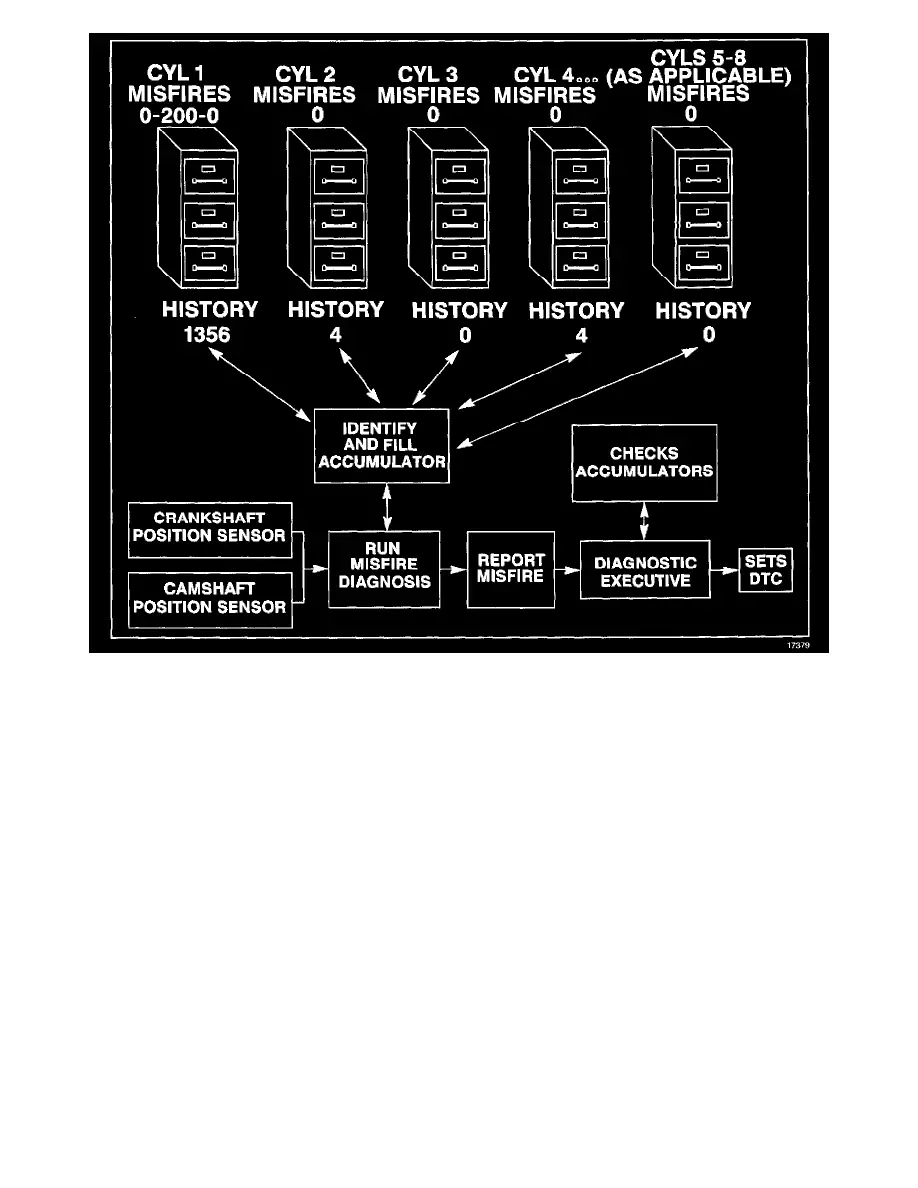Firebird V8-5.7L VIN G (2001)

Whenever a cylinder misfires, the misfire diagnostic counts the misfire and notes the crankshaft position at the time the misfire occurred.
A current and a history misfire counter is maintained for each cylinder. The misfire current counters (Misfire Cur # 1 - 8) indicate the number of firing
events out of the last 200 cylinder firing events which were misfires. The misfire current counters displays real time data without a misfire DTC stored.
The misfire history counters (Misfire Hist # 1 - 8) indicate the total number of cylinder firing events which were misfires. The misfire history counters
displays 0 until the misfire diagnostic has failed and a DTC P0300 is set. Once the misfire DTC sets, the misfire history counters will be updated every
200 cylinder firing events. The Misfire counters graphic illustrates how these misfire counters are maintained.
When the crankshaft rotation is erratic, the PCM detects a misfire condition. Because of this erratic condition, the data that is collected by the diagnostic
can sometimes incorrectly identify which cylinder is misfiring. The Misfire Counters graphic shows misfires are counted from more than one cylinder.
Cylinder # 1 has the majority of counted misfires. In this situation, the Misfire Counters would identity cylinder # 1 as the misfiring cylinder. The
misfires in the other counters were background noise caused by the erratic rotation of the crankshaft. If the number of accumulated misfires is sufficient
for the diagnostic to identify a true misfire, the diagnostic will set DTC P0300- Misfire Detected. The illustration depicts an accumulation in the history
buffers.
If 2 cylinders in sequential firing order are both misfiring, the first misfiring cylinder will accumulate misfires in its buffer, but the second misfiring
cylinder will not. This condition occurs because the PCM compares a misfiring cylinder with the cylinder that is 90 degrees prior to the misfiring
cylinder in the firing order. Therefore the PCM compares the crankshaft speed of the second misfiring cylinder to an already suspect cylinder. The PCM
will be able to detect both misfiring cylinders after the engine exceeds 2000 RPM. This condition occurs because the PCM then starts to compare the
misfires to the opposing cylinder rather than to the previous cylinder in the firing order.
Use the Techline equipment in order to monitor the misfire counter data on applicable vehicles. Knowing which specific cylinders misfire can help to
diagnose this condition. Use the information in the misfire counters in order identify which cylinders are misfiring. If the counters indicate that cylinders
number 1 and number 4 misfired, look for a circuit or a component that is common to both cylinders.
The misfire diagnostic may indicate a fault due to a temporary fault that is not necessarily caused by a vehicle emission system malfunction. Examples
include the following conditions:
^
Contaminated fuel
